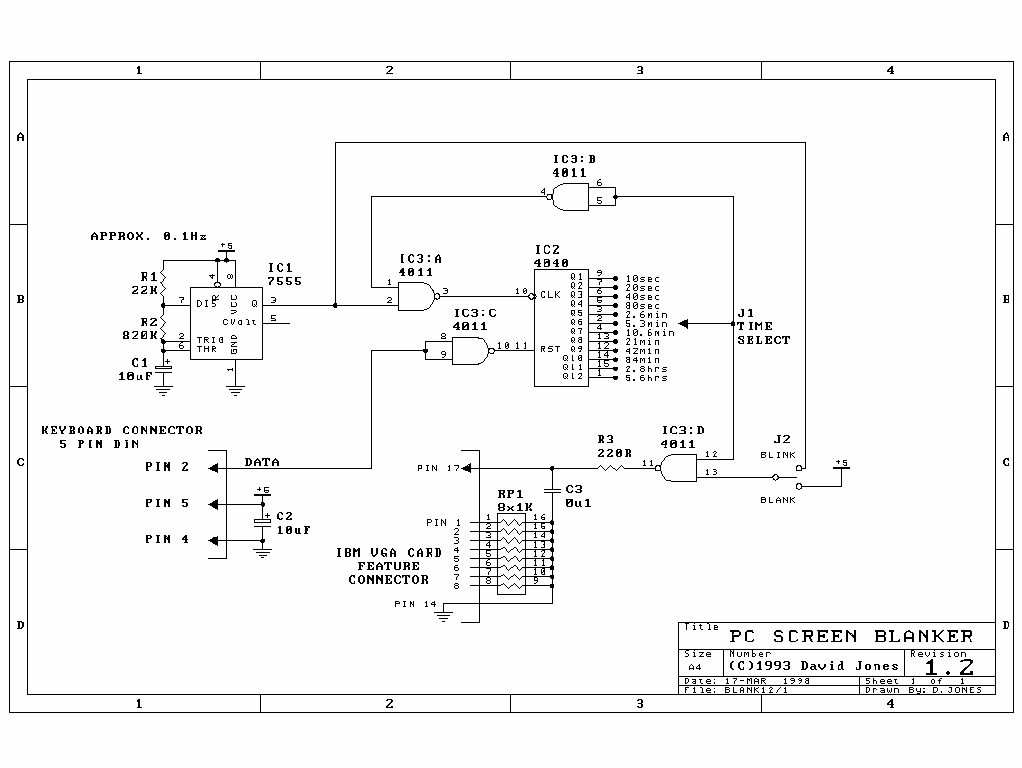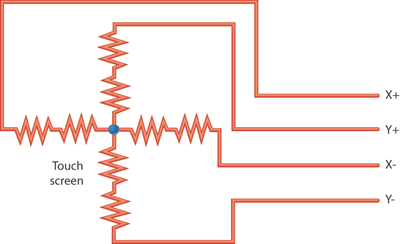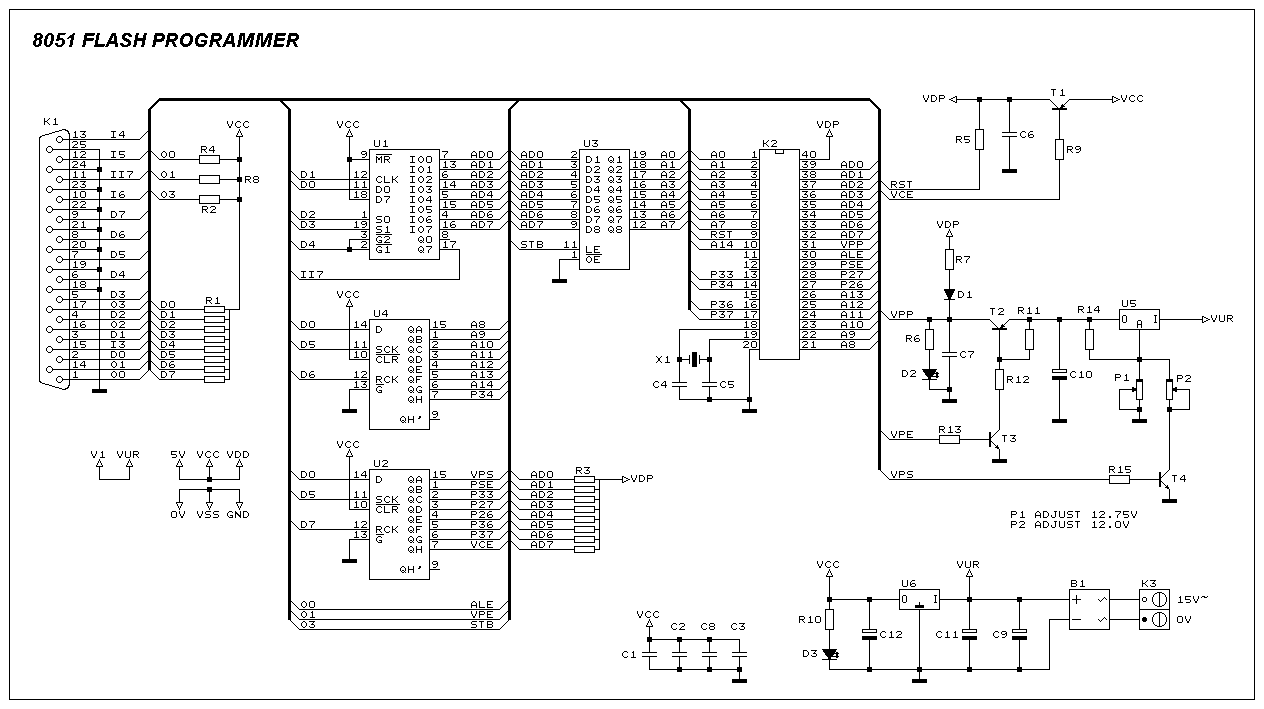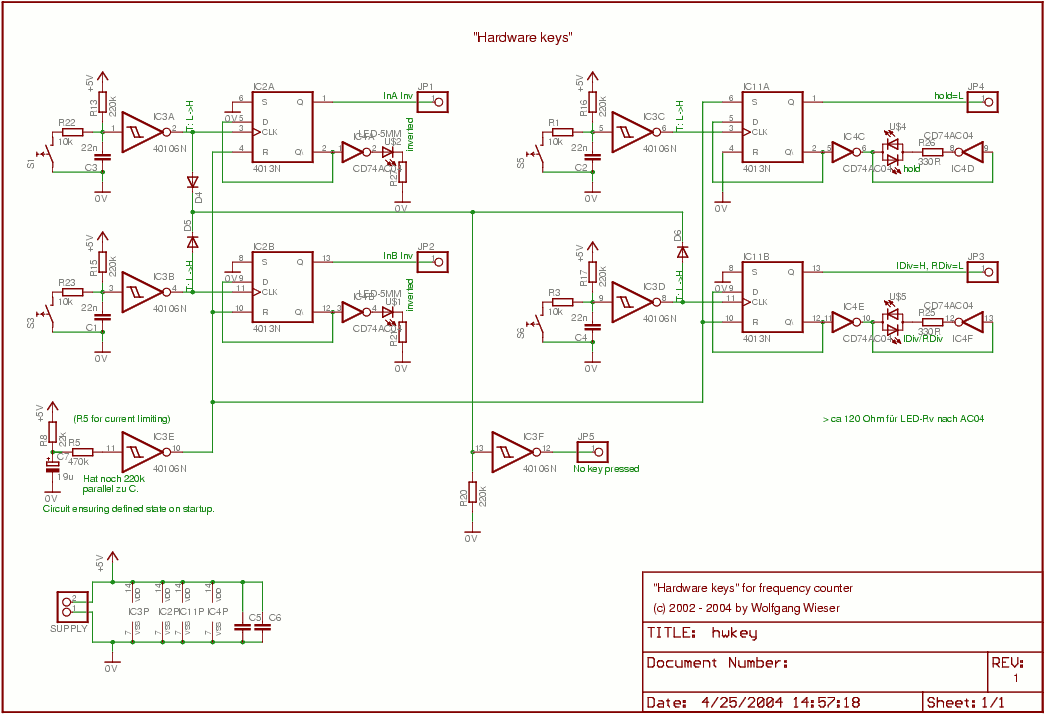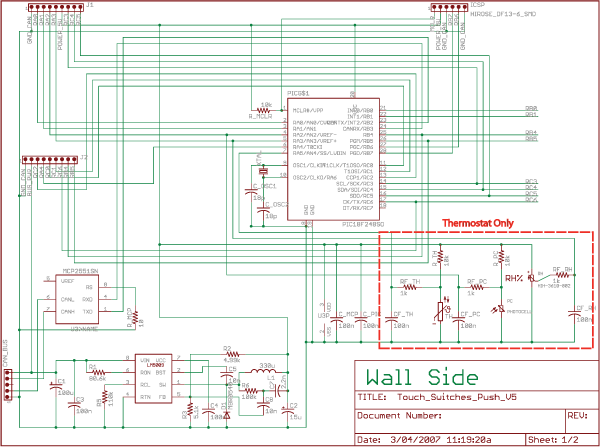
Atmel AT89C2051 hardware keylogers

The Atmel AT89C2051 keylogger circuit connects to a PC keyboard via a PS/2 connection cable, facilitating data transfer between the keyboard and the circuit during program execution.
The Atmel AT89C2051 microcontroller is a popular choice for implementing keylogger circuits due to its compact size and sufficient processing capabilities. In this application, the keylogger is designed to intercept data from a PS/2 keyboard, allowing for the capture of keystrokes. The PS/2 interface operates by sending serial data, which the microcontroller can read and process.
The circuit typically consists of the AT89C2051 microcontroller, a PS/2 connector, and necessary passive components such as resistors and capacitors to ensure stable operation. The PS/2 connector interfaces with the keyboard's data and clock lines, allowing the microcontroller to receive signals corresponding to each keypress.
The connection involves wiring the data line (usually pin 2 of the PS/2 connector) to a designated input pin on the AT89C2051, and the clock line (pin 1 of the PS/2 connector) to another input pin. Pull-up resistors may be used on these lines to maintain the correct voltage levels when the keyboard is idle.
The microcontroller is programmed to interpret the incoming data stream, which consists of a sequence of bits representing each keystroke. This data can be stored in memory or transmitted to another device for further analysis. The program running on the AT89C2051 must handle the timing of the data reception accurately, as the PS/2 protocol requires precise synchronization between the clock and data signals.
Overall, the integration of the AT89C2051 with a PS/2 keyboard creates a functional keylogger capable of monitoring and recording user input for various applications, including security assessments and usability testing.Atmel On the PC keyboard PS 2 AT89C2051 keylogers circuit connection cable connects to the circuit between what is written in the wake of the program running. 🔗 External reference
The Atmel AT89C2051 microcontroller is a popular choice for implementing keylogger circuits due to its compact size and sufficient processing capabilities. In this application, the keylogger is designed to intercept data from a PS/2 keyboard, allowing for the capture of keystrokes. The PS/2 interface operates by sending serial data, which the microcontroller can read and process.
The circuit typically consists of the AT89C2051 microcontroller, a PS/2 connector, and necessary passive components such as resistors and capacitors to ensure stable operation. The PS/2 connector interfaces with the keyboard's data and clock lines, allowing the microcontroller to receive signals corresponding to each keypress.
The connection involves wiring the data line (usually pin 2 of the PS/2 connector) to a designated input pin on the AT89C2051, and the clock line (pin 1 of the PS/2 connector) to another input pin. Pull-up resistors may be used on these lines to maintain the correct voltage levels when the keyboard is idle.
The microcontroller is programmed to interpret the incoming data stream, which consists of a sequence of bits representing each keystroke. This data can be stored in memory or transmitted to another device for further analysis. The program running on the AT89C2051 must handle the timing of the data reception accurately, as the PS/2 protocol requires precise synchronization between the clock and data signals.
Overall, the integration of the AT89C2051 with a PS/2 keyboard creates a functional keylogger capable of monitoring and recording user input for various applications, including security assessments and usability testing.Atmel On the PC keyboard PS 2 AT89C2051 keylogers circuit connection cable connects to the circuit between what is written in the wake of the program running. 🔗 External reference
